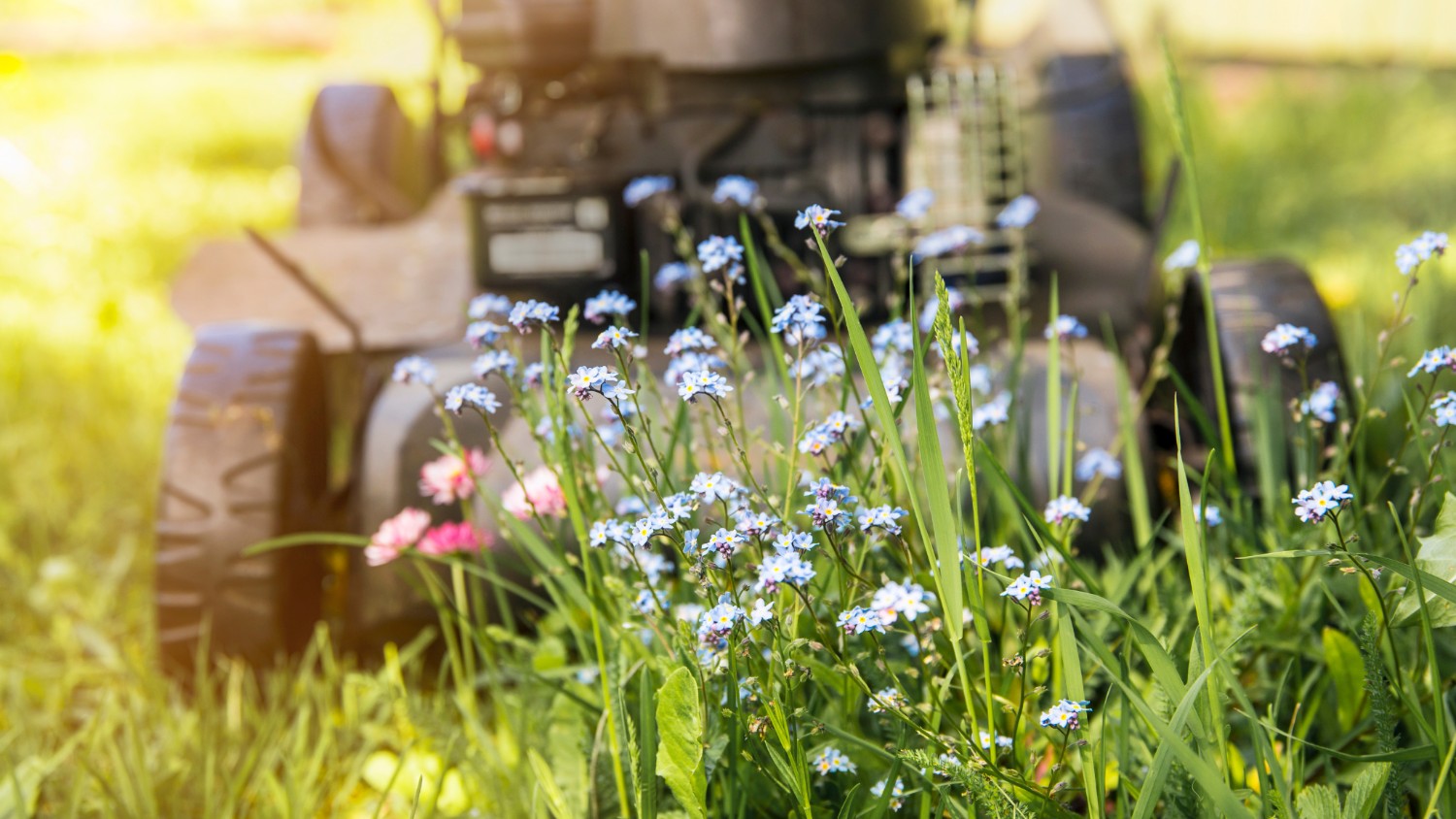No Mow May is trending again—but is it actually the best move for your lawn and your water?
It’s a tempting idea—skip mowing for a month to help bees and early-season pollinators. And yes, it can make a difference. But before you park the mower for May, let’s talk about what really works best for your yard, your water, and your community.
Why Low-Mow May Be the Better Long-Term Choice
Low-mow lawn care is a growing movement that’s easy to maintain, good for your yard, and great for the environment. Instead of skipping mowing altogether, you mow less often—usually every 2–3 weeks—and keep your blade set higher (around 3–4 inches).
This creates a thick, resilient lawn that retains moisture, supports pollinators, and prevents runoff. It’s a win-win for your schedule, your soil, and your water.
What About No Mow May?
The idea behind No Mow May is simple: give pollinators a head start by letting dandelions and other early bloomers grow. It’s well-intentioned and can help bees in early spring.
But skipping mowing for a whole month can leave your yard overgrown, stressed, and harder to recover. If not done carefully, the one-time overgrowth can lead to patchy regrowth and extra lawn care headaches later on.
Check Your Local Rules
Not every community in the Fox-Wolf Watershed allows No Mow May. While many cities and towns embrace the trend, others can have stricter grass-height ordinances on the books.
The Northeast Wisconsin Stormwater Consortium (NEWSC) encourages everyone considering No Mow May to first check local guidelines to avoid unexpected citations or fines. Rules vary from place to place—so it’s always good to know before you stop mowing.
No Mow vs Low-Mow
| No Mow May | Low-Mow Lawn | |
|---|---|---|
| Mowing frequency | None in May | Every 2–3 weeks |
| Grass height | Tall growth, then sudden trim | Consistently at 3–4 inches |
| Pollinator benefit | High but temporary | Good and sustainable |
| Water impact | Neutral or potentially negative* | Positive (reduces runoff) |
| Local ordinance | Must check local rules | Generally compliant |
*Suddenly cutting tall grass can stress your lawn and lead to excess clippings in streets.
Your Lawn, Your Water
Here’s the good news: your yard can make a difference. When you mow smart and manage clippings properly, you’re helping keep our rivers, lakes, and streams clean.
Grass clippings left on sidewalks or streets get washed into storm drains. Once in the water, they break down—feeding harmful algae and bacteria. That can lead to murky water, fish stress, and even unpleasant smells in the places we all love to swim, paddle, or fish.
The solution is simple:
-
-
- Bag or compost your grass clippings
- Keep grass off streets, sidewalks, and out of storm drains
- Mow high, mow less, mow with care
-
Whether you’re skipping the mower or simply mowing less often, how you care for your lawn matters—not just for pollinators, but for your neighborhood, your local waterways, and your quality of life. By making thoughtful choices, like checking local rules, mowing high, and keeping clippings out of the street, you’re doing more than yardwork. You’re helping protect the lakes, rivers, and streams that connect us all. It starts with your lawn—but it flows far beyond it.
For more tips and simple ways to protect your water at home, visit Renew Our Waters.





I mow a lot more often during May mulching with the mower set at 3.5 inches which leaves dandelions blooms and the clover blooms for pollinators. I like more frequent mulching when grass grows fast. I believe the finer grass clippings fall deep into the grass making kess runoff.